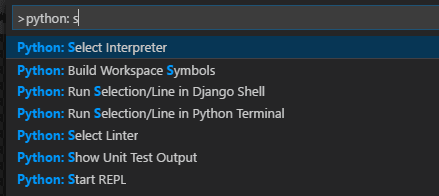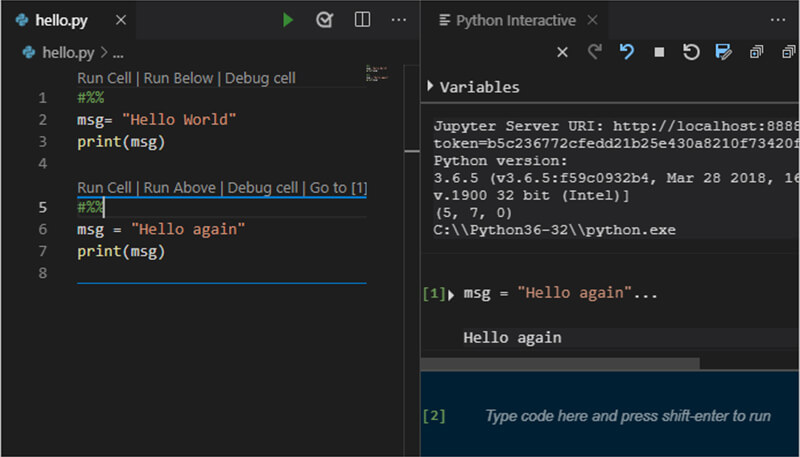

To remove an environment from the project, select Remove.Ī virtual environment is a unique combination of a specific Python interpreter and a specific set of libraries that is different from other global and conda environments. Right-click that environment under the Python Environments node and select Activate Environment. If you already added an environment other than the global default to a project, you might need to activate a newly added environment. Once in the Add Environment dialog box, select the Existing environment tab, then select a new environment from the Environment drop-down list: You can also select Add Environment from the environment drop-down in the Python toolbar. To change the environment for a project, right-click the Python Environments node and select Add Environment. Visual Studio also uses that environment for debugging, import and member completions, syntax checking, and any other tasks that require language services that are specific to the Python version and a set of installed packages.Īll new Python projects in Visual Studio are initially configured to use the default global environment, which appears under the Python Environments node in Solution Explorer:
#Visual studio code python environment for mac
You should consider upgrading via the 'python -m pip install -upgrade pip' command.Applies to: Visual Studio Visual Studio for Mac Visual Studio CodeĪll code in a Python project runs within the context of a specific environment, such as a global Python environment, an Anaconda environment, a virtual environment, or a conda environment. You are using pip version 10.0.1, however version 19.0.1 is available. Successfully created 'envBlogConda01'. # * for power-users using bash, you must source # To deactivate an active environment, use: => WARNING: A newer version of conda exists.

Virtual environment was successfully created at '.\Python\PythonApplication1\envBlog01'Įnvironment location: d:\ProgramData\Anaconda3\envs\envBlogConda01 Of course, we have the option to review the Console logs, to understand the background processes Virtual environment is being created at '.\Python\PythonApplication1\envBlog01' If we decided to create an Anaconda working environment, we can load our working packages from a file, or from a cool drop-down list.Īdding and upgrading packages is done with the usual Visual Studio integrated experience With 2 clicks I can add a new environment, where I can choose the Python version, a base Anaconda environment, and tons of options more. With 2 clicks I know what I have in my environment: current python version, packages and more. Let’s start with a single Python Application in the solution explorer. I was trying some of the new features in Visual Studio 2019 Preview 2, and the options to manage Python environments blown my mind. I’ll became a brand-new Mac user in the next couple of days, so I hope that everything I’ve learned is the same on Mac. So far, is good enough for me and my machine learning devs. Visual Studio Code is amazing environment to work with Python. I’m not a fan of console environments, and if we add this to the 90% of the Python work, that maybe the main problem. Let me start with IANAPU, and that’s maybe why, when I need to work and understand what is in my current environment it took me a lot of time to get and deploy the correct tools and the right packages to work with.


 0 kommentar(er)
0 kommentar(er)
